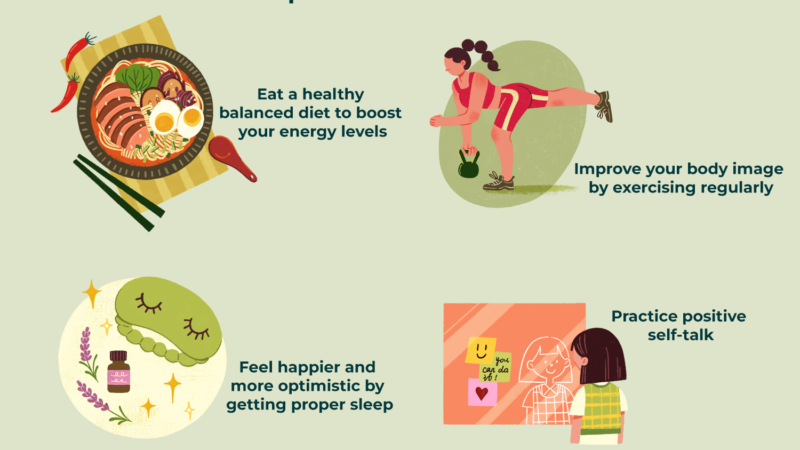The Big Idea: Do we all experience the world the same way? | Books

Me Imagine you and I are walking along Brighton’s seafront together on a sunny day, and we both stop to gaze up at the deep blue sky. It’s a beautiful sight, but are we having the same experience? Do you see the same blue that I see?
It’s easy to assume we do. After all, we both use the word “blue,” and the color seems to be a property of the sky, not our minds. But the science of perception, of how the brain interprets sensory information to generate objects, people, and places, suggests otherwise. Just as we are all different on the outside, our internal experiences are likely to differ as well.
It can seem like the world is just pouring right into our minds through the transparent windows of our eyes and ears. But psychologists have long known that perception is not simply a “reading” of sensory information. We are strongly influenced by the context. From the effect of shadows on how we perceive the brightness of a surface, to our tendency to interpret facial expressions based on what we think is happening, context pervades all of our conscious experiences, and it does so in ways that we are never normally aware of. . of.
Some researchers, myself included, go even further. Rather than context simply influencing the contents of perception, the idea here, drawing on the legacy of the great German scholar Hermann von Helmholtz, is that perceptual experience is constructed from the top down, with incoming sensory cues. (from bottom to top) mostly. fine-tuning the brain’s “best guesses” about what’s going on. In this view, the brain continually makes predictions about causes from the sensory information it receives and uses that information to update its predictions. In other words, we live in a “controlled hallucination” that remains linked to reality by a dance of prediction and correction, but that is never identical to that reality.
One surprising consequence of this is that since we all have different brains, making slightly different best guesses, we will all have different perceptual experiences as well, even if we are faced with the same objective external reality. Just as the blue of the sky can be different for each of us, all our experiences can differ: does a peach taste the same to me as it does to you? Unlike our external differences, differences in perception are private, subjective, hidden under the common language we use to describe them.
Well, not always. Some types of diversity of perception are very familiar. Descriptions of hallucinations and delusions go back thousands of years, but they are generally interpreted as a failure of perception against the reference point of an idealized and normative way of perceiving the world.
More recently, the concept of “neurodiversity” has deservedly drawn attention to the radically different ways some people experience their worlds. This framework emphasizes that those differences are not deficits, although this emphasis is often lost because neurodiversity is usually associated with medically defined conditions, such as autism or ADHD, that are generally thought to be difficult to manage. (There are a few exceptions. Often described as a “blending of the senses,” in which you can taste colors or see sounds, synesthesia is often thought to enhance creativity and cognitive ability, though the evidence is mixed.)
What it misses with the idea of neurodiversity is the possibility that each of us sees the world in our own way, although not so markedly that differences emerge in the way we behave or describe our experiences.
Sometimes the spell is broken and we recognize our perceptions for the constructs they are. A few years ago, a poorly exposed photograph of a dress went viral on social media because half the world saw it one way (white and gold) while the other half saw it another way (blue and black). People in each camp just couldn’t believe the other interpretation was possible. This could have been a lot of fun, but it didn’t seem to lead to a broader understanding that the way we see (or hear, smell, taste, or touch) things can differ from person to person.
A new project I’m involved with, called the Perception Census, aims to change all this. Developed by a team that includes scientists, philosophers, and artists, the goal is to map the hidden landscape of perceptual diversity. It consists of engaging, fun, easy and quick to complete online experiments and interactive illusions. In addition to providing valuable data, participants can learn about their own powers of perception and how they relate to others. It is important to note that the Perception Census goes beyond visual perception, exploring sound and music, emotions and how we experience the passage of time. Anyone over the age of 18 can participate and the first results will be announced at the end of the year.
Bringing out our internal diversity could be as transformative for society as acknowledging our externally visible diversity has been. Just as there is no “best” skin color, there is no single way of perceiving the world that others can compare themselves to and find themselves deficient in. And unlike the concept of neurodiversity, which tends to be reserved for specific conditions, perceptual diversity applies to all of us.
A greater appreciation of this should help us cultivate humility about our own perspectives. Just as it helps us to occasionally question our social and political beliefs, it helps to know that others may literally see things differently than we do, and that these differences can translate into different beliefs and behaviors. It might even be that engaging people in simple exercises that reveal the constructed nature of perception opens their minds to other points of view and helps resolve disagreements.
More often than not, however, understanding perceptual diversity makes the world a richer and more wonderful place. The next time you go for a walk by the sea, or through a town, try to imagine all the unique and personalized interior universes in the minds of all the people around you. There is not just one beautiful world out there, there are many.






